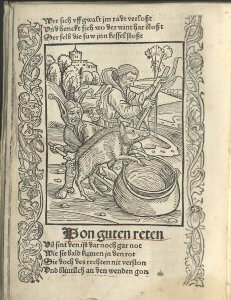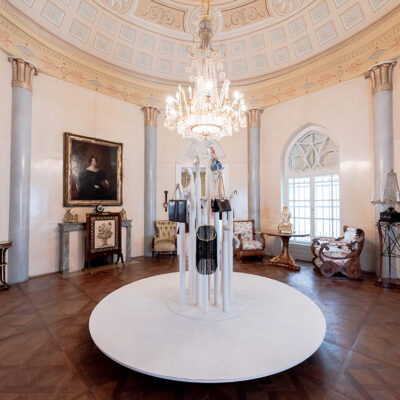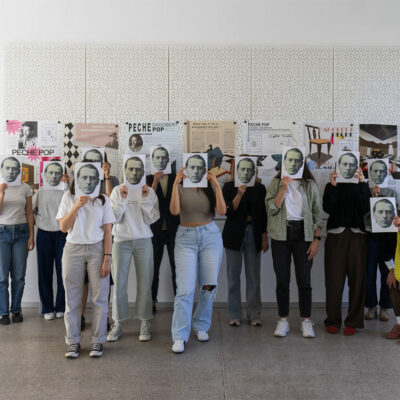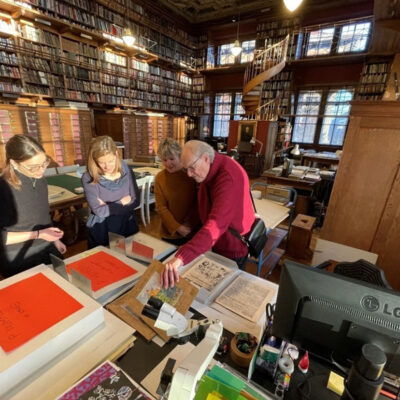The Ship of Fools by Sebastian Brant
Album curated by: Kathrin Pokorny-Nagel, 2025
The Ship of Fools is a moral satire first published in 1494 by humanist Sebastian Brant and Basel publisher Johann Bergmann von Olpe. The work, in which Albrecht Dürer is also believed to have collaborated, consists of 112 chapters and describes 109 different “fools,” each representing a specific human weakness or transgression. The fools are on a ship bound for the fictional land of “Narragonia,” a symbol of the satire’s goal: to show readers their vices and moral failings and to admonish them to lead a better life. Brant uses the metaphor of the ship of fools to illustrate that all people are fools in some way. These fools are not outsiders, but represent typical weaknesses that are widespread in society – from complacency and gambling addiction to narcissism and vice.
Chapter 2, “Of Good Counsel,” Two fools struggle to lift a pig into a cauldron with sticks.
The Ship of Fools is a prime example of intermediality and makes use of the new possibilities offered by book printing with 114 woodcuts illustrating the work. Each type of fool is presented with a proverbial poem, a woodcut, and a motto. This combination of text and image makes the work an early precursor of emblematics. The woodcuts, some of which are attributed to Albrecht Dürer, who was living in Basel at the time, contribute significantly to the impact of the book. In his work, Brant emphasizes that recognizing one’s own folly is the first step toward moral improvement, and his work offers a humorous but profound examination of the human weaknesses of his time.
The digital full version of The Ship of Fools from the MAK Collection
The Ship of Fools in the MAK Collection Online
For further reading on the subject, see the “Narragonien digital” project, which makes a total of twelve German, Low German, Latin, Dutch, and French editions of “The Ship of Fools” published before 1500 available as digital copies, transcriptions, and reading texts, and provides editorial access to them as reading texts and in synoptic view.











